Photo credit: Alexis Riel, ICH-Photo Competitor (Youth)
Djab-Djab is a traditional masquerade which originated during slavery. Practitioners paint their bodies in charcoal or black oil and redden their tongues with food colouring. Djab-Djabs beat drums on the streets during the lead up to the February carnival on Carriacou and the August carnival in Grenada and are especially seen at j’ouvert. The bands play within their own parishes and clash with other bands from neighbouring villages or with bands from other parishes.
Djab is a village mas’ that is particularly popular in the parish of St. Andrew such as at La Fillette. Perdmontemps and Windsor Forest in St. David, Willis in St. George, and Sauteurs, St. Patrick are some of the places also well known for Djab, as well as throughout Carriacou.
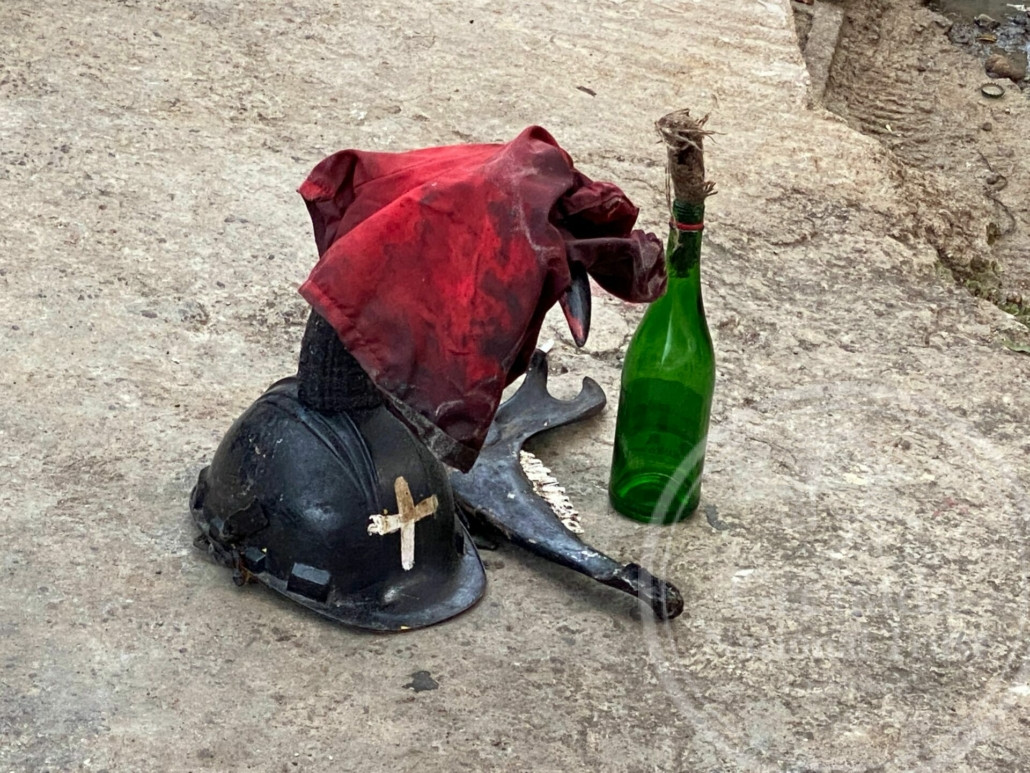
DJab-DJab
Photo credit: Proud of my Heritage - ICH Team/Zone No.3
Glen Forsyth, Colin Dowe, and Vaughn Thomas, better known as “Irack”, whose brother captains a Djab band, are practitioners. Other Djabs include Darius who was born on Carnival Monday morning and says that he started to play Djab-Djab while he was still in school. He is the founder of a Djab-Djab band in La Fillette. Clarie Joseph has been the captain of Darius’s band for the past 46 years and the band has won the championship 10 times. Fitzroy Roberts, better known as “Crabbi”, has been the lead drummer in the band for the past 38 years.
Some instruments used are chains and shackles which are worn around the neck and body or dragged along the street (an expression of breaking free from the physical bondage of slavery), a construction helmet or potty with horns, baby oil to grease the skin before putting on the oil, and the jawbone of a donkey to make the Djab look fierce. Djab-Djabs once carried live serpents but this has been banned. Now, they may use the heads of animals such as pigs or chickens, an octopus, cod fish, crapauds or frogs, or even a container filled with millipedes. Some Djabs may also drag a coffin behind them while others, as previously noted, may carry chains or shackles.
A torch signifies that the band is coming and may also be used in performances. When the captain puts the torch on the ground, the Djab form a circle, the captain does a ‘vandam’ over the torch, then all the players move to the beat of the drum. The blowing of the shell signifies the captain calling or gathering his members. It is a signal.
Playing Djab-Djab attracts people to Grenada during carnival and soca artists have helped to promote Djab-Djab music.
Practitioners believe that education programmes about Djab-Djab need to be carried out and included in schools so people can understand the masquerade and the traditions behind it. Being educated about the cultural and historical significance of Djab-Djab might also help to reduce negative behaviours by younger players.
They also point out that DJ music adversely affects the masquerade as it competes with the drums of the Djab. Practitioners note that the younger generation wants to introduce their own spin on the playing of Djab-Djab (such as introducing colours other than black on their bodies) but their portrayal of Djab is not aligned with the traditional reasons why Djab-Djab came into existence. Practitioners also believe that the masquerade has gotten more commercialized which has detracted from the small village bands. They further noted that the high use of alcohol enabled some people to display negative behaviours and should be discouraged.
During Carnival in Grenada (August 2022) this well recognized ICH-element was documented by the ICH-teams in different communities by interviewing some practitioners as Colin Dowe, Glenn Forsyth, Clary Joseph & Vaughn Thomas, La Fillete.
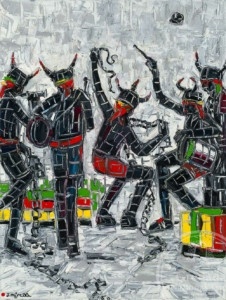
Photo Credit (Painting): Joachim McMillan, 2021


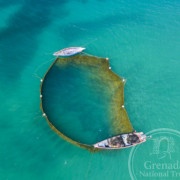
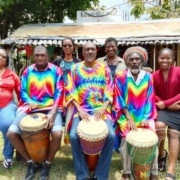
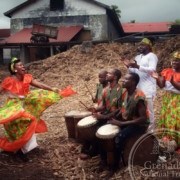
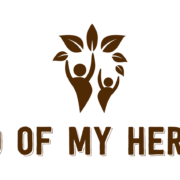

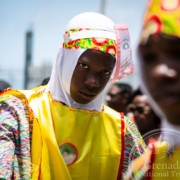
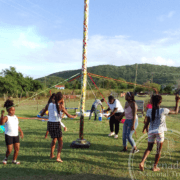
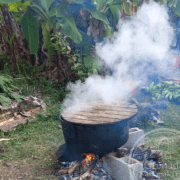



Leave a Reply
Want to join the discussion?Feel free to contribute!